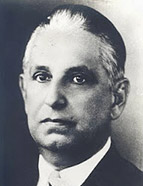

The same innovative approach defines his publication “Damas e salões do Segundo Reinado” [Ladies and Salons of the Second Reign] (1942). The result of extensive research into a wide array of sources, this work focuses on the salons—the quintessential social spaces of the imperial elite—where Brazil's bourgeoisie gathered to converse, enjoy music, and dance. From the art of hospitality to exquisite decoration, from the cordial atmosphere between rival politicians to the latest fashion trends, including vivid descriptions of parties, games, and soirées, Wanderley presents a rich inventory of the practices, customs, and values of the so-called "good society". Furthermore, it highlights the significant role played by women in these spaces, a subject that has received scant attention in contemporary historiography. In this regard, the Bahian historian anticipates, so to speak, what is now regarded as gender studies.
Wanderley Pinho broadened his research horizons even further with his work História de um engenho do recôncavo 1552-1944 [History of a sugar mill in the Recôncavo 1552-1944] (1946). The original version won the first place prize in a competition sponsored by the Instituto do Açúcar e do Álcool [Sugar and Alcohol Institute]. This extensive work examines the history of the Freguesia Sugar Mill (also known as Matoim or Novo Caboto), which belonged to his family and was one of the most significant sugar mills in the Recôncavo of Bahia during the colonial period. The mill has since been transformed into the Museu do Recôncavo Wanderley Pinho [Wanderley Pinho Museum of the Recôncavo]. For this purpose, he drew on the accounts of early chroniclers, ancient codices, and testimonies collected from Brazilian and Portuguese cartorial archives. The exhaustive study aims to capture life at the sugar mill in its entirety, encompassing the multitude of aspects explored by the author: the activities of the Jesuits, the distribution of sesmarias [land distribution system], the influence of the Inquisition, pirate attacks, the Dutch occupation, slave labour, the daily routines of the casa grande [big house], and the evolution of sugar production across the Colonial, Imperial, and Republican periods. Enriched with an abundance of iconographic material, the contribution is acclaimed for its documentary richness and lucid presentation, standing as one of the finest analyses of the economic framework of agrarian, slave-owning, and mercantilist Brazil.
This work is financed by national funds through FCT - Foundation for Science and Technology, I.P, in the scope of the projects UIDB/04311/2020 and UIDP/04311/2020.
